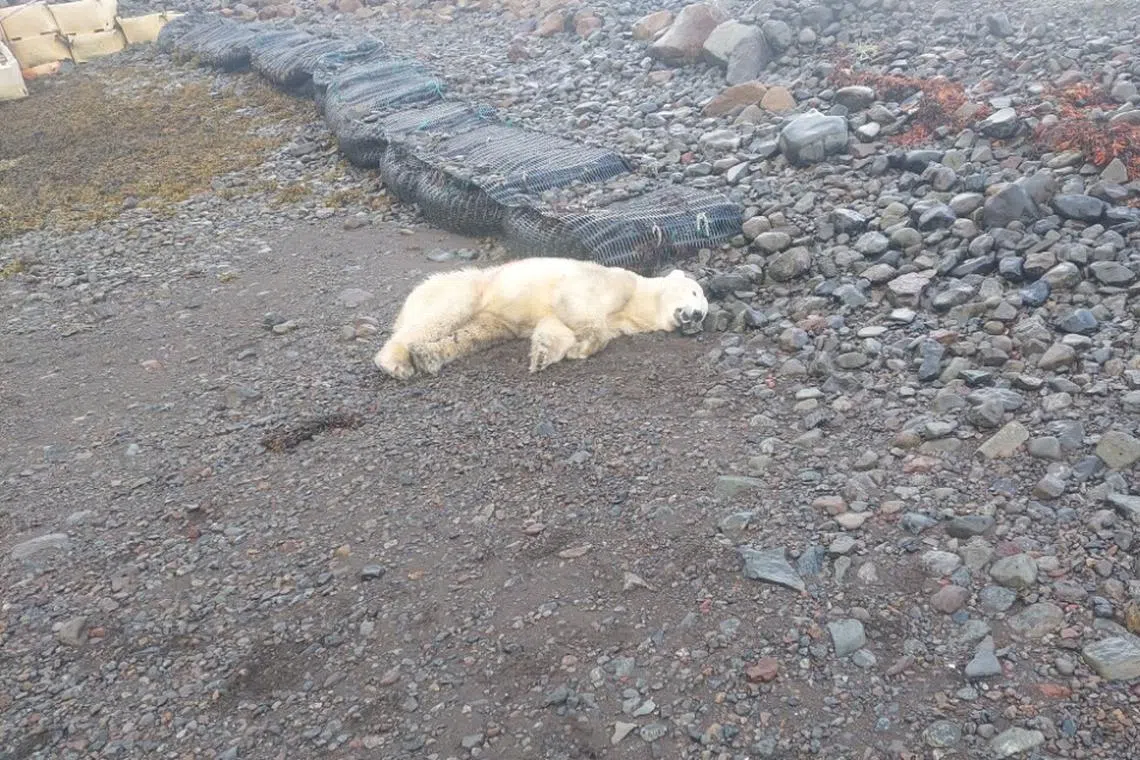Rare polar bear picking through garbage in Iceland killed by police
Sign up now: Get ST's newsletters delivered to your inbox

The young bear was very close to a summer house and had rummaged through the elderly owner's garbage.
PHOTO: LÖGREGLAN Á VESTFJÖRÐUM/FACEBOOK
Follow topic:
For the first time in years, a polar bear was spotted on Icelandic soil. But within hours, it was deemed a threat and shot by the police on Sept 19.
An elderly woman in the remote north-west of Iceland called for help after encountering the animal just metres away from her summer house, reported local news outlet Visir.
The bear was killed after police consulted the Icelandic environment agency, which declined to relocate it, Westfjords police chief Helgi Jensson told The Associated Press (AP).
“It’s not something we like to do,” Mr Jensson said. In this case, the bear had been very close to the summer house of the frightened owner, who was alone and had locked herself upstairs as the bear rummaged through her garbage, he added.
She also contacted her daughter, who lived more than 240km away in the nation’s capital Reykjavik, by satellite link.
After the animal was shot, the Coast Guard surveyed the area for more bears but did not find any, reported AP.
Samples have since been taken from the carcass, said Visir. It is estimated that the young female bear was in its second or third year, measured about 163cm and weighed about 150kg to 200kg.
Polar bears are not native to Iceland, but they are a protected species in the country, and it is forbidden to kill one at sea. However, they can be killed if they pose a threat to humans or livestock.
The bears occasionally come ashore after travelling from Greenland, sometimes on floating icebergs or ice floes, according to Reykjavik museum Perlan. About 700 bear sightings have been recorded since humans settled on the island.
When two bears came ashore in 2008, a debate over killing the vulnerable species led the environment minister to convene a task force to determine how the authorities should respond, according to details found on the Icelandic Institute of Natural History website.

A polar bear was shot dead on Sept 19 in the remote north-west of Iceland.
PHOTO: LÖGREGLAN Á VESTFJÖRÐUM/FACEBOOK
The task force concluded that killing the bears was the most appropriate solution. It cited the threat to the safety of humans and livestock, the ability of east Greenland’s population to withstand the occasional bear shot in Iceland, and the high costs of moving them back to Greenland, which is about 300km away.
Before the Sept 19 killing, the last bear spotted in the Nordic country was also shot dead when it was spotted in northern Iceland in 2016.
Attacks by polar bears on humans are extremely rare, according to a 2017 study in Wildlife Society Bulletin. From 1870 to 2014, there were 73 such attacks documented in five countries with polar bear populations.
However, researchers found that the loss of sea ice from climate change could drive more hungry bears to land and nearer people, increasing the likelihood of conflict.
In August, two polar bears killed a worker at a remote Arctic radar station in northern Canada.


